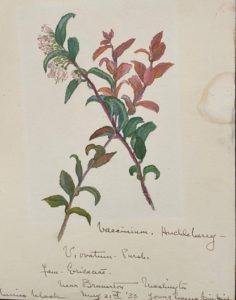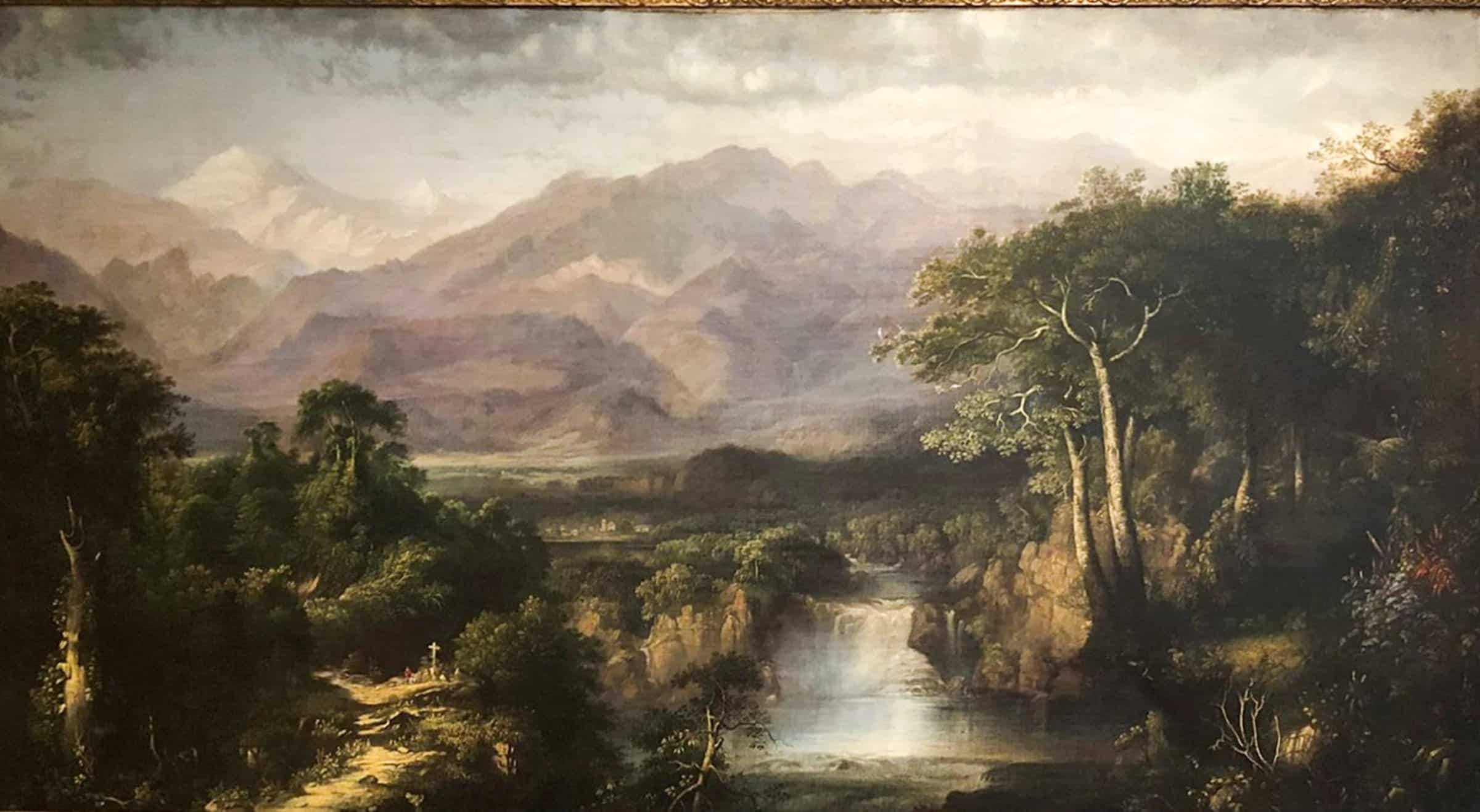By Allegra Davis
When Frederic and Isabel Church’s youngest son Louis inherited Olana in 1900, he became the steward of a remarkable legacy: the complete estate, including thousands of decorative objects and artworks and tens of thousands of paper records, of one of the most influential American artists of the nineteenth century.

Botanical painting by Isabel “Downie” Church
Louis and his wife Sally Good were the key caretakers of this legacy throughout the first half of the twentieth century and the last family residents of Olana. Little changed in the main house during their tenure at Olana. Shortly after Sally died in 1964, the historic preservation efforts of a public-private partnership initiated by art historian David Huntington launched–preserving most of the Church family artifacts within the walls of the house. Olana opened to the public in 1967 as a New York State Historic Site, looking much as it had during the lifetimes of its original owners, Frederic and Isabel Church. Today, Olana is one of the world’s most intact nineteenth-century artist’s environments.
Nevertheless, some objects disappeared from the collection of the main house at Olana in the twentieth century, leaving gaps in the otherwise remarkably preserved historic interiors. In many cases, we know these objects were once in the house based on clues in primary source documents like letters and diaries or because they appear in historic photographs of the home’s interiors. Some were inherited by Frederic and Isabel Churches’ other children and passed down to their descendants; Louis or Sally gave others away to family and friends. These objects are primarily in private collections now, with some in the public collections of other museums.
“Archives relating to these battles, past and present, will be a resource to future scholars in the history of historic and environmental preservation”
Returning these objects to Olana brings us closer to the goal of presenting a fully restored Olana. When a confirmed “ex-Olana” object is for sale, the window of opportunity to acquire is narrow, which requires an available pool of funds to make a nimble purchase and prevent the object from slipping away from Olana again, potentially forever. Even when donors offer these objects as gifts, the expense of fine art shipping to bring these delicate items home can be substantial. The Olana Partnership has never had a funding source for acquiring art and historic objects before, limiting the acquisitions work it can do on behalf of Olana State Historic Site. That’s where the newly launched Olana Collections Discovery Fund comes in.
This fund will also help with the second collecting area for Olana’s historical collections: materials related to the pioneering preservation history of the site in the 20th century, including the advocacy for the surrounding viewshed. Archives relating to these battles, past and present, will be a resource to future scholars in the history of historic and environmental preservation. Though, even when offered to Olana as gifts, these artifacts come with significant packing and shipping expenses for what can be dozens of document boxes.
Based on the grassroots level, the Olana Collections Discovery Fund invites everyone, at any donation level, to invest in Olana’s future – the future of this public collection that belongs to the people of the State of New York. Immediate uses for the fund will include the purchase and transportation costs for several notable objects once in the main house at Olana: a pictorial tile by the Persian ceramicist Ali Muhammad Isfahani, who also created two signed fireplace surrounds in the house, a portrait of Church’s daughter Isabel Charlotte by the English painter Felix Moscheles, and a rare early edition of a book by Church’s friend Charles Dudley Warner, signed by Frederic Church on the endpapers, as well as a rich and evocative newly discovered Frederic Church letter previously unknown to us that appeared on the market with an autograph dealer.

“Heart of the Andes” by Mark R. Harrison (1877)
With the public’s help, The Olana Partnership can significantly broaden the stories we can tell through the Olana collection as we grow and evolve beyond a sole focus on the life and work of Frederic Church. In addition to the growing archives relating to Olana’s role in national environmental protection, The Olana Partnership recently obtained botanical paintings created by Frederic Church’s daughter, Isabel Charlotte “Downie” Church. The Olana Collections Discovery Fund covers the shipping of these works and other recent donations–including the unseen research by David Huntington, the art historian whose campaign to save Olana in the 1960s ensured its preservation, and an 1877 copy Heart of the Andes by artist Mark R. Harrison which David and Gertrude Huntington previously owned–showing the rapturous reception and unexpected afterlives of Church’s work, even in his lifetime.
With the help of Olana supporters like you, the Olana Collections Discovery Fund will ensure that historic, one-of-a-kind items with a crucial role in telling the stories of everyone who has lived and worked at Olana are preserved and made available to the public for centuries to come.